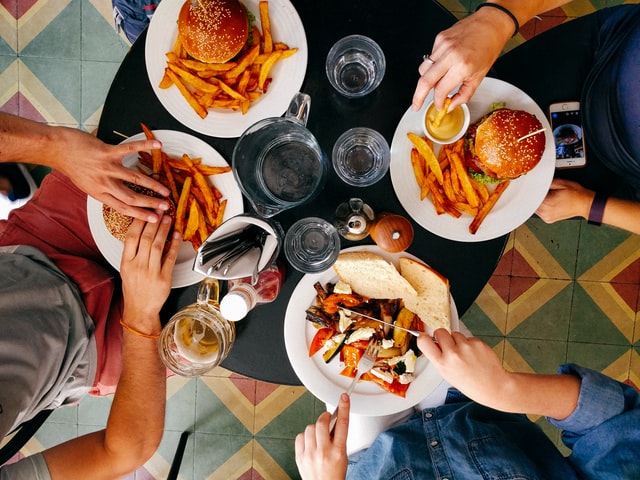
LOS Angeles County this week gave the green light for several businesses and activities to operate indoors, including restaurants, gyms and movie theaters, as it moved into the less restrictive red tier under California’s reopening plan.
As of Monday, March 15 — a year after the county’s first COVID-19 related health order — restaurants could reopen indoors at 25% maximum capacity and with additional restrictions, such as one household per table with a limit of six diners and eight-feet distancing between tables.
The county Department of Public Health urges restaurant employees to have additional masking protection, such as N95 masks, KN95 masks, or double masks, in addition to the required face shield.
These changes come as LA County, along with other Southern California counties like Orange and San Bernardino, moved out of the most restrictive purple tier and into the red tier, allowing more relaxed measures.
“Today marks a pivotal moment in our fight to end this dual pandemic — public health and economic pandemic,” LA County Supervisor Holly Mitchell said during a press briefing with ethnic media on Monday.
She added, “It’s important to note that the following health guidelines paid off. We’ve reached this moment thanks to our collective effort to socially distance, wear our masks, get tested and get vaccinated when it’s our turn to do so.”
Gyms, fitness centers, yoga and dance studios, which had been previously allowed to operate outdoors, are able to welcome back guests indoors at 10% capacity with a masking requirement.
Meanwhile, movie theaters (with reserved seating and six feet distancing), museums, zoos and aquariums can open indoors at 25% capacity. Retail and personal care services, as well as indoor shopping malls, can increase capacity to 50%.
Private gatherings can occur indoors with up to three separate households, with masking and distancing required at all times. People who are fully vaccinated can gather in small numbers indoors with other people who are fully vaccinated without required masking and distancing.
“Outdoors is definitely safer than indoors and that’s one of the reasons why the restriction in terms of the number of people inside is the way it is right now,” LA County Health Officer Dr. Muntu Davis said during Monday’s briefing. “We want to see how this actually works.”
Individuals who are at high-risk for illness from COVID-19 are still advised to not gather with others outside of their household indoors, Davis said.
With spring break and holidays like Easter, coming up, county officials are advising residents to not let their guard down, especially as certain segments of the population are not yet eligible for the vaccine.
As of this week, Californians with disabilities and certain health conditions, as well as those working in public transit and custodial positions are eligible for the vaccine.
Those who are high-risk for illness will be asked to self report their condition when signing up for an appointment.
“I want everybody to understand that those vaccines are being made available to this group because they’re at serious risk of being hospitalized and dying,” Davis said.
This expansion builds on the already eligible population, which include health care workers, those over the age of 65, those living in long-term care facilities, educators, food and agricultural workers, and emergency service personnel.
The Biden administration recently announced that by May 1, adults in the U.S. will have access to the vaccine.
Officials and medical professionals are also continuing to urge communities of color to get vaccinated when it’s their turn and are underscoring the layer of protection that comes with receiving both doses of either the Pfizer or Moderna jab or a single dose of Johnson & Johnson.
The county, along with community organizations, has been organizing mobile vaccination events at churches, parks and centers to make vaccinations more accessible if individuals can’t make it to one of the county-run sites.
“As more vaccine frees up, as the tiers open up, we are going to get more and more vaccine into the arms of people who need it,” Jim Mangia, president and CEO of St. John’s Well Child and Family Center, said on Monday. “And we’re going to see that herd immunity get to the levels we needed to be in order to allow the communities of South LA, Central LA, East LA, to be safe and for us to go back to normal.”
On Tuesday, March 16, 11 counties moved from the most restrictive purple tier to the red: Lake, Monterey, Riverside, Sacramento, San Diego, Santa Barbara, Sutter, Tehama, Tulare and Ventura. Meanwhile, San Mateo moved from the red to the moderate orange tier.
Eleven counties remain in the purple tier, while 42 are in the red, and four in the orange tier. Only one is in the yellow (minimal) tier.
On April 1, theme parks, such as Disneyland in Orange County and Universal Studios Hollywood in LA, will be allowed to reopen at 15% capacity with in-state visitors only.
With the red tier status, schools are permitted to re-open for in-person instruction for students in grades 7-12 adhering to all state and county directives.
“If conditions worsen, strong state or local mandatory measures may again be necessary. We urge everyone to exercise great caution and good judgment in these next critical weeks and months to avoid overwhelming our health care system with a surge in cases, hospitalizations and deaths, like we saw at the end of 2020, and the beginning of 2021,” Davis said.
LA County confirmed 52 new deaths and 318 additional cases of COVID-19 on Tuesday, bringing the total to 22,519 fatalities and 1,210,905 positive cases since the start of the pandemic.






